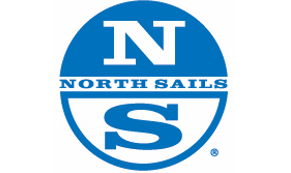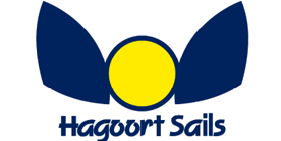Soldiering on against the Tide
11 augustus 2016 - One of life's little pleasures after leaving the English mainland and making the short trip to Cowes is taking the Sally Water Taxi from the Ferry landing at Town Quay, up the River Medina to East Cowes Marina. The wooden .......
motor launch putters upriver like the African Queen, passing cutting edge racing boats and graceful classic yachts, a pittance well spent for a waterside tour of Cowes. Last Friday a young family came aboard, and as we pulled away a young girl asked “What is the difference between East Cowes and West Cowes”. For locals and grown-ups this can be a touchy question, as West Cowes hosts the yacht clubs, high-end sailing shops, and mainlanders wandering along the charming old High Street. East Cowes hosts old boatsheds and a few factories, and modest working-class row houses. It suffered disproportionately in the wartime bombing, and perhaps balances a small chip on the shoulder with hard-work and perseverance.
The taximan broke the ice by noting he lives in East Cowes, and another woman on the launch added that East Cowes has a Waitrose, the best market on the island. I told the girl that all of the Dutch boats stayed in East Cowes Marina, because they liked clean and quiet marinas, and it was also home of Maverick. Her brother asked “What’s Maverick”? “A beatiful blue racing sailboat, a little older and not as fancy some of the ones over there” I said, gesturing toward West Cowes, “but she’s unpretentious and works hard -- like East Cowes”. The taximan flashed me a smile.
Early Sunday we left our berth in East Cowes and motored down river, past the yacht clubs and the stout grey stone castle on the north shore that marks the near end of the start line. The Royal Ocean Racing Club Channel Race was first held in 1928 and is one of the oldest yacht races, a 'navigator's race' with diabolical courses in the strong tides and tricky headlands off the UK South Coast. This year we would start to the west, sailing 15 miles out the Solent and heading along the headlands to a mark 30 miles to the west. We would then head back east, rounding St.Catherine’s Point at the southern tip of the Isle of Wight, out to a buoy 20 miles east of the Island, before heading back through the massive forts guarding the eastern entrance to the Solent and a few final miles to the finish.
We again faced a less favorable (for Mav) light wind forecast, and sailed slowly behind the start line with 40 other boats. Our mis-matched sailing outfits and Mav’s slight scruffiness contrasted with the top boats passing along side, sporting sponsor advertising on hull and sails and professional crew clad in identical crisp new foul weather outfits. We were the pride of East Cowes, a couple of hard nosed Corinthians on an older but still very competitive boat. With a win and third place in class in our last two races we but felt confident -- but seasoned enough to appreciate how quickly fortunes can turn.
In the last minutes before the start the fleet worked its way toward the north end of the line, in the shallower water off the South England coast. We remained alone in the South near the Castle, where we would take advantage of fast early current and hope we would enjoy the same or better breeze. A puff of white smoke and a sharp report from the quayside cannon announced the start, and with a strong westward current and a whisper of wind we moved steadily along the North coast of the island. The group to the north, meaning everyone else, counted on a better angle and potentially a stronger breeze, but with less current. In the first 20 minutes we held a narrow edge over even the fastest boats in the race, with our Dutch friends on the big Open 70 Sanya finally gliding ahead a mile to the north. “This is a repeat of the Cherbourg Race last year” I blurted to Ken Parsons, recalling our lonely but well-reasoned southern start that paid of handsomely in our run out of the Solent. Sailing marries science and superstition, and he unhesitatingly responded “You shouldn’t have said that”.
As we progressed down the Solent the wind softened further, and after 90 minutes some of the top-name boats like Erivale and Raging Bee caught up and joined un on the Southern edge of the main channel. The boats further north enjoyed a little more breeze and gained ground, and we saw our sister J-120 Nunatek sail parallel to us and then edge ahead. As we neared the Needles the wind in our area dropped away completely, and we drifted with the tide as the main group moved steadily ahead. Raging Bee swallowed their pride and tacked north, and soon tacked back again as they entered swifter running current, but we lost further time to stubbornness before following suit.
Exiting the white-chalk Needles and beginning the long beat toward Poole we lay nearly a mile behind Nunatek and most of our doublehanded class, but over 100 miles and a long night lay ahead. The light conditions and slow progress out of the Solent now meant the tide would be pushing against us at the far west mark, and the earlier arriving boats would enjoy a big advantage.
For the next hour we sailed first just ahead, and later closely behind the faster Erivale, and finally caught up and passed fellow Dutch boat and frequent winner Winsome. This lovely Sparkman and Stephens classic navigated the Solent masterfully and had a jump on their class as well as on many of us in faster classes. We also slowly pulled ahead of the smaller but pesky doublehanders Ninjod and Diablo J, while the pair of doublehanded Sunfast 3600s, Bellino and Game On, slipped out of the Solent well ahead and were locked in a mano-a-mano duel that would continue to the finish. We had tacked the earliest to the first headland, initially benefitting from the tide pushing down from the peninsula and wind bending around it, but as we approached the grey-green cliffs we slowed dramatically in the turning tide. We quickly tacked back but had sailed in too far, a costly navigation miscue.
As the fleet worked toward the western mark the tide turned against us; still miles from the buoy the big boats from top classes flew past under spinnaker, carried along on a favorable tide. We lay well over a mile behind Nunatek, but still leading the faster and crewed J-111 British Soldier, our speed toward the mark slowing as the tide strengthened and the wind again dropped. In the last three miles to the mark British Soldier edged ahead but we narrowed the gap to Nunatex to less than half a mile. The pair rounded ahead of us, and with the tide now running a full 2.5 knots on the nose and a whisper of a breeze we struggled for over half an hour to finally round the cursed buoy.
We hoisted our big blue running spinnaker, taking aim at colored spinnakers now barely visible several miles ahead. Our consolation was watching the boats behind us similarly struggle to make the mark, and knowing we would also open up a huge advantage over them during the next hour. We trimmed and held good speed, enjoyed sunshine, warm weather and a welcome meal. Over the next hours we narrowed the gap to the boats ahead, and as the wind rotated further north we readied to gybe the big blue spinnaker.
We steered deeper down wind and as we gybed the clew of the big sail passed nicely over the forestay, but the top of the sail began to wrap around it. We continued through the gybe, hauled in on harder on the sheet and eventually the expanse of nylon slid off the forestay and filled. We were shocked to see a huge tear in the middle of the sail, and with wind now near 15 knots we needed to get it down quickly to prevent greater damage. We smartly dropped the damaged kite and hurriedly rigged and hoisted the small heavy weather reaching spinnaker. We gave back another mile during the sail change and unless we could repair the big kite we would sail slower and shallower. We realized our chase and podium run was imperiled, and briefly debated rehoisting the big spinnaker after Ken deftly repaired it with sail tape. With disappointment but realism we chose to take our lumps with the smaller sail and not risk blowing up our main spinnaker completely, and losing it for the long Ouessant Race in a few weeks time.
Through the night we sailed eastward and remained well ahead of Ninjod, Daiblo J, Raging Bee and others in our doublehanded class. The tide turned back against us as we sailed along the southern edge of the island, and though British Soldier lay only a mile further west they managed much better speed and began to extend their lead. We gybed again, having erred again by sailing too long in a swift tidal race along the coast, and picked up speed toward the penultimate mark. Constrained to the small spinnaker and having dawdled too long in the strongest current, we surrendered valuable time to the biats ahead as well as the trailing fleet. We dropped the spinnaker cleanly as we neared the flashing eastern mark, and after rounding close by we set a course for the Forts and the finish.
We rounded just behind the crewed J-109 Mojo Risin’ but with wind now 10-12 kts we soon pulled well ahead. We approached the imposing round Napoleonic era forts in the welcome glow of dawn, only three miles to the finish. Mav ghosted through the wind shadow of Horse Sand Fort before the breeze returned for a few minutes, but soon it dropped to a whisper. Tide was running against and with a combination of exhaustion and anger I cursed the wind (or lack thereof), and fates. In the early light we played patches of wind to keep Mav moving ahead slowly against the tide, slow-motion tacking and managing a knot or so toward the finish. We spotted British Soldier and Nunatek near the finish and almost motionless less than two miles ahead, tantalizingly close but too little time to catch them.
Well over an hour later, creeping along a ribbon of weak breeze we finally crossed the finish, waving to the patient crew on the Committee Boat. The wind soon picked up as we sailed the few miles back toward Cowes, and after dropping sails we motored up the Medina toward our home in East Cowes. Our podium streak was over though we would end up a respectable fifth in the doublehanded class, ahead of several class leaders, with the Game On and Bellino deservedly taking the top two spots and Nunatek earning third place. We were battered and disappointed but put up a good fight, a scruffy and unpretentious Corinthian team keeping up with the big boys through hard work and perserverence, much like East Cowes itself.
Succes voor Team Heiner Pups tijdens Ramsgate Week
8 augustus 2016 - We dit it! De eerste buitenlandse wedstrijdweek van de Team Heiner Pups in het Engelse Ramsgate is uitermate geslaagd en leverde niet 1 maar wel vier prijzen op! Na de goede voo... Lees verder
Onderscheiding voor Roy van Aller
30 augustus 2016 - Roy van Aller is tijdens de DAMEN Breskens Sailing Weekend onderscheiden voor zijn bewezen diensten en is geridderd in de Orde van Oranje-Nassau. Lees verder













